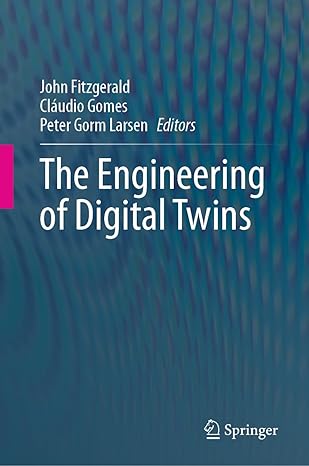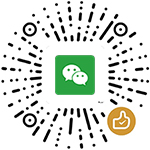
The Engineering of Digital Twins
by 作者: John Fitzgerald (Editor), Cláudio Gomes (Editor), Peter Gorm Larsen (Editor)
Publisher Finelybook 出版社: Springer
Edition 版本: 2024th
Publication Date 出版日期: 2024-08-25
Language 语言: English
Pages 页数: 411 pages
ISBN-10 书号: 3031667182
ISBN-13 书号: 9783031667183
Book Description
This book is about the engineering of Digital Twins (DTs) of cyber-physical systems (CPSs). It goes behind the glossy image of DTs to help researchers and advanced professionals to ask and answer the fundamental questions underpinning the development of a DT. What are the foundational concepts of the DT? How do different engineering disciplines interact in creating a DT? How should the physical and digital worlds be connected, and how do the imperfections and faults inherent in both worlds affect the DT’s qualities? How can we use a DT to support decisions, and how do we maintain it through life?
To this end, the book is structured in five parts: “Foundations” introduces the DT concept, the potential benefits of DTs seen from a business perspective, and foundations for DT engineering. “Models and Data” presents the range of models and data that form the core assets of DTs for CPSs. It covers ways in which models can be produced and calibrated, and considers how data is derived from a CPS and communicated to its DT. Next, “Services for Digital Twins” details some of the main services that a DT provides by building on the assets of models and data, including visualisation, fault detection and diagnosis and support for decision-making. “Realising Digital Twins” then covers the realisation of DTs, including a platform allowing engineers to construct DTs from reusable components. Case studies in food production, robotics and marine engineering are presented using a systematic framework that aligns with the DT engineering concepts introduced in the earlier parts of the book. Eventually, “Advanced Topics in Digital Twins” introduces advanced topics in delivering dependable DT-enabled systems, focusing on security and privacy, the capacity for autonomy, and a range of open research topics.
This book aims at researchers in DT technology and design, including advanced (master and doctoral) students, as well as engineering practitioners aiming to develop DTs. The most common techniques described in the main text will be accessible via open-source projects, including further DT examples, exercises and solutions, as well as pointers to emerging standards, frameworks and platforms. Classroom materials, exercises and solutions are available to lecturers through a dedicated Web site.
From the Back Cover
This book is about the engineering of Digital Twins (DTs) of cyber-physical systems (CPSs). It goes behind the glossy image of DTs to help researchers and advanced professionals to ask and answer the fundamental questions underpinning the development of a DT. What are the foundational concepts of the DT? How do different engineering disciplines interact in creating a DT? How should the physical and digital worlds be connected, and how do the imperfections and faults inherent in both worlds affect the DT’s qualities? How can we use a DT to support decisions, and how do we maintain it through life?
To this end, the book is structured in five parts: “Foundations” introduces the DT concept, the potential benefits of DTs seen from a business perspective, and foundations for DT engineering. “Models and Data” presents the range of models and data that form the core assets of DTs for CPSs. It covers ways in which models can be produced and calibrated, and considers how data is derived from a CPS and communicated to its DT. Next, “Services for Digital Twins” details some of the main services that a DT provides by building on the assets of models and data, including visualisation, fault detection and diagnosis and support for decision-making. “Realising Digital Twins” then covers the realisation of DTs, including a platform allowing engineers to construct DTs from reusable components. Case studies in food production, robotics and marine engineering are presented using a systematic framework that aligns with the DT engineering concepts introduced in the earlier parts of the book. Eventually, “Advanced Topics in Digital Twins” introduces advanced topics in delivering dependable DT-enabled systems, focusing on security and privacy, the capacity for autonomy, and a range of open research topics.
This book aims at researchers in DT technology and design, including advanced (master and doctoral) students, as well as engineering practitioners aiming to develop DTs. The most common techniques described in the main text will be accessible via open-source projects, including further DT examples, exercises and solutions, as well as pointers to emerging standards, frameworks and platforms. Classroom materials, exercises and solutions are available to lecturers through a dedicated Web site.
About the Author
John Fitzgerald is Professor of Computing and Dean for Strategic Projects in Science, Agriculture and Engineering at Newcastle University, UK. Peter Gorm Larsen heads the multi-departmental Aarhus University Center for Digitalisation (DIGIT) and the Aarhus University Center for Digital Twins. They have been working together on model-based and formal methods for software and systems engineering since the early 1990s. They have led major international projects in industry and academia expanding the capabilities of methods and tools to support the multi-stakeholder engineering of challenging classes of products including systems of systems and cyber-physical systems. Cláudio Gomes is Assistant Professor with the Department of Electrical and Computer Engineering at Aarhus University. Since 2016 he has collaborated with Peter, together they have published multiple papers together, with a focus on bringing recent digital twin advances to multiple domains.








